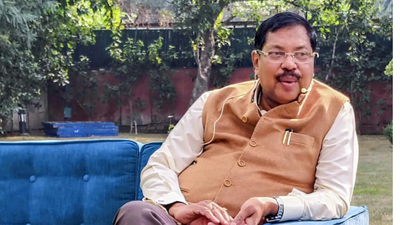
Outgoing CJI Gavai
The CJI said he had sought a report from NCLAT judicial member Justice Sharad Kumar Sharma who had startled everyone by disclosing in open court on Aug 13 that “one of the most revered members of the higher judiciary of this country” had approached him to secure a favourable order and recused himself from hearing the case.The CJI said by the time Justice Sharma sent a detailed report, the HC chief justice in question had retired; thus, a formal in-house inquiry could not be ordered against the errant member of the judiciary.Ex-HC CJ not in ambit of detailed in-house proceedingsThe CJI said that shortly after he initiated deliberations among his colleagues over the process or procedure to be adopted to weed out such attempts in future, the President appointed Justice Surya Kant as his successor to the post of CJI. “That is why I thought it better to leave it to the new CJI to take appropriate action on the issue,” he said.The retired HC CJ is out of the ambit of detailed in-house proceedings, an adverse finding in which could persuade the CJI to recommend govt to initiate a motion in Parliament for the judge’s removal. However, he may not be completely out of the arc of accountability as the new CJI, Justice Surya Kant, could still recommend registration of FIR under Prevention of Corruption Act. On November 14, addressing the matter, a bench of CJI-designate Justice Kant and Justice Joymalya Bagchi had told advocate Prashant Bhushan, who was appearing for a petitioner, that “action will have to be initiated at the highest level (of the judiciary, that is the CJI) against the one who attempted to interfere with the administration of justice. If Supreme Court takes up this issue on the judicial side, then it would run counter to the power vested in the highest authority. The highest authority cannot be guided by judicial orders to take a decision.”Noting the seriousness of the matter, the bench had said that under the existing legal framework for fixing accountability on constitutional court judges, the issue raised by the petitioner should be dealt with on the administrative side.
- Tags
- India



